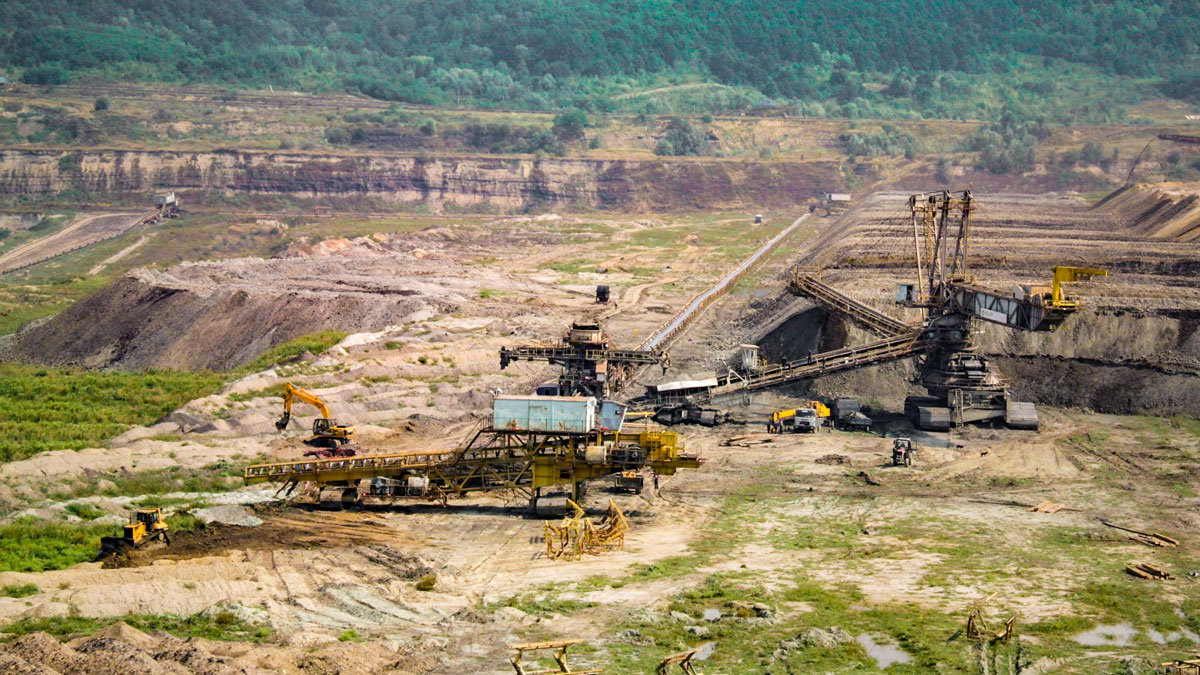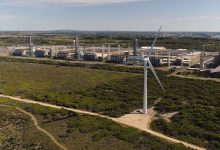Complexul Energetic Oltenia to Resume Lignite Mining in Rosia Quarry
The Bucharest Court of Appeal on August 23 upheld the appeal brought by Complexul Energetic Oltenia (CEO) against the ruling of Bucharest County Court in early July by which the environmental permit for Rosia quarry was suspended, as a result of the application brought by the environmental NGO Bankwatch Romania.
This is a very important decision for CEO, as it allows resuming the mining of lignite in the upper layers of the quarry, thus also removing the risk of subsidence. However, it should not be forgotten that in mid-September the judgment on the merits of the application brought by the environmental activists on the annulment of the environmental permit for the quarry is due to begin. The environmental permit for Rosia quarry was obtained in September 2020 and it would allow increasing production to 8 million tons of lignite/year.
The plea raised by the representatives of Bankwatch Romania for suspending the environmental permit for Rosia quarry, the largest exploited by CEO, was puerile. They claimed that a natural area exists close to Rosia quarry protected at community level (Jiu Corridor) and which contains 18 types of natural habitats, with 13 species of invertebrates, 13 species of fish, 5 species of reptiles, 5 species of mammals that contribute to preserve the ecological balance, according to a material published on the NGO’s website.
Bankwatch Romania forgets to explain how these habitats and animal species are affected. The inhabitants near the quarry have been accusing for a long-time problems with air pollution and noise pollution, have been complaining for lack of drinking water due to destruction of groundwater, there have been cases of house subsidence, Bankwatch also accused.
However, we cannot ignore the fact that Bankwatch wants to save the invertebrates in Romania and clean air for the Romanians but ignores what is happening at the moment in Germany, a country that is slowly reopening coal-fired power plants to try to cope with the price explosion.
Coal consumption has increased across the European continent and Poland is at the top of the list, and this only to give another example, but the defenders of extreme environmentalism are not bothered by this.
Real risk of ecological disaster
In the case in which the Bucharest Court of Appeal upheld the judgment of Bucharest County Court, there was a real risk for lignite mining in Rosia to be stopped, which would have led to the closure of an energy group at Rovinari power plant within the complex, as the necessary lignite stocks for winter couldn’t be realized. Therefore, the jobs for 1,200 people would have also been at risk.
The situation could have become extremely serious, especially since it would have emerged during a period of crisis, in which electricity prices break record after record, and increasingly more EU countries reopen their thermal power plants and increase their production or imports of coal.
Stopping an energy group at Rovinari thermal power plant would create additional problems to the national energy system, which would therefore enter the winter with an even greater energy deficit.
Rovinari thermal power plant has four energy groups, each with an installed power of 330 MW. Overall, CE Oltenia has an installed capacity in the four thermal power plants of 3,570 MW and operates nine mining quarries with an annual production of about 21 million tons of lignite.
According to the latest data communicated by the National Institute of Statistics, in the first six months of the year Romania’s coal production was 1.459 million tons of oil equivalent (toe), rising by 1% (14,100 toe) compared to H1/2021, while imports stood at 281,500 toe of net coal, by 51,200 toe (22.2%) more than the amount imported in the similar period last year.
Tismana I quarry to expand
While the fate of Rosia quarry is at stake in courtrooms, the Executive adopted a decision to remove from the forestry real estate an area of 30 hectares of forest in order to develop the Tismana I lignite quarry, so that production increases here to 5 million tons per year.
The Government had to adopt a decision in this respect because direct negotiations between CE Oltenia and landowners in the area for purchasing them are going very slow due to the high prices requested by them, way above prices resulting from evaluations. According to a document of the Ministry of Energy, land purchase is also hindered a lot by the lack of titles or misunderstandings between heirs, and these problems cause difficulties in ensuring coal for thermal power plants.
What does the restructuring plan of the company provide
The restructuring plan of the complex, approved by the European Commission at the end of last year, provides for the reduction of the installed capacity in its coal-fired power plants from 3,570 MW to 1,650 MW in 2030. Also, following the closure of some production capacities, the plan also takes into account the closure of some mining quarries. Therefore, Tismana and Jilt Sud quarries will be put in conservation and Husnicioara, Pesteana and Lupoaia quarries will be closed, so that coal production will be concentrated in the remaining four units (Rosia, Pinoasa, Jilt Nord and Rosiuta). Coal production will stabilize starting with 2026 to approximately 10 million tons per year, but they will also be closed by December 2030. It must be stated however that this plan was approved before the start of the war in Ukraine, which totally changed the energy priorities of the European Union, which is now returning to coal to cover the gas deficit. On the other hand, the plan provides for the transfer of Craiova II thermal power plant within CE Oltenia to Craiova Local Council, and this was recently approved by CE Oltenia shareholders. The decarbonization plan of the complex provides for building 8 photovoltaic parks with a capacity of 725 MW by 2026, building 2 gas-fired power plants with a capacity of 1,375 MW etc.
State wants to resume investments on Jiu, Olt, and Siret rivers
Hydropower development on Jiu River involves the construction of a dam and of a micro hydropower plant in Livezeni and two hydropower plants in Dumitra and Bumbesti Jiu.
Works started in 2004 and were 90% completed, according to Hidroelectrica, at the time of blocking the investments as a result of the court action of environmental NGOs Bankwatch Romania and Agent Green.
After more than four years, the state did not manage to unlock the situation of these investments that cost over EUR 155 million.
Also, Declic Association managed in February this year to annul in court the construction permit for a project of Hidroelectrica on Basca Mare River in Buzau Mountains.
Now, the Government changes the approach and announced that hydropower investments on Jiu Valley, as well as on Olt Valley and Siret Valley, could be included in the National Recovery and Resilience Plan (NRRP). These projects could be completed if they are declared of strategic national importance, especially since it is about investments in green energy.







